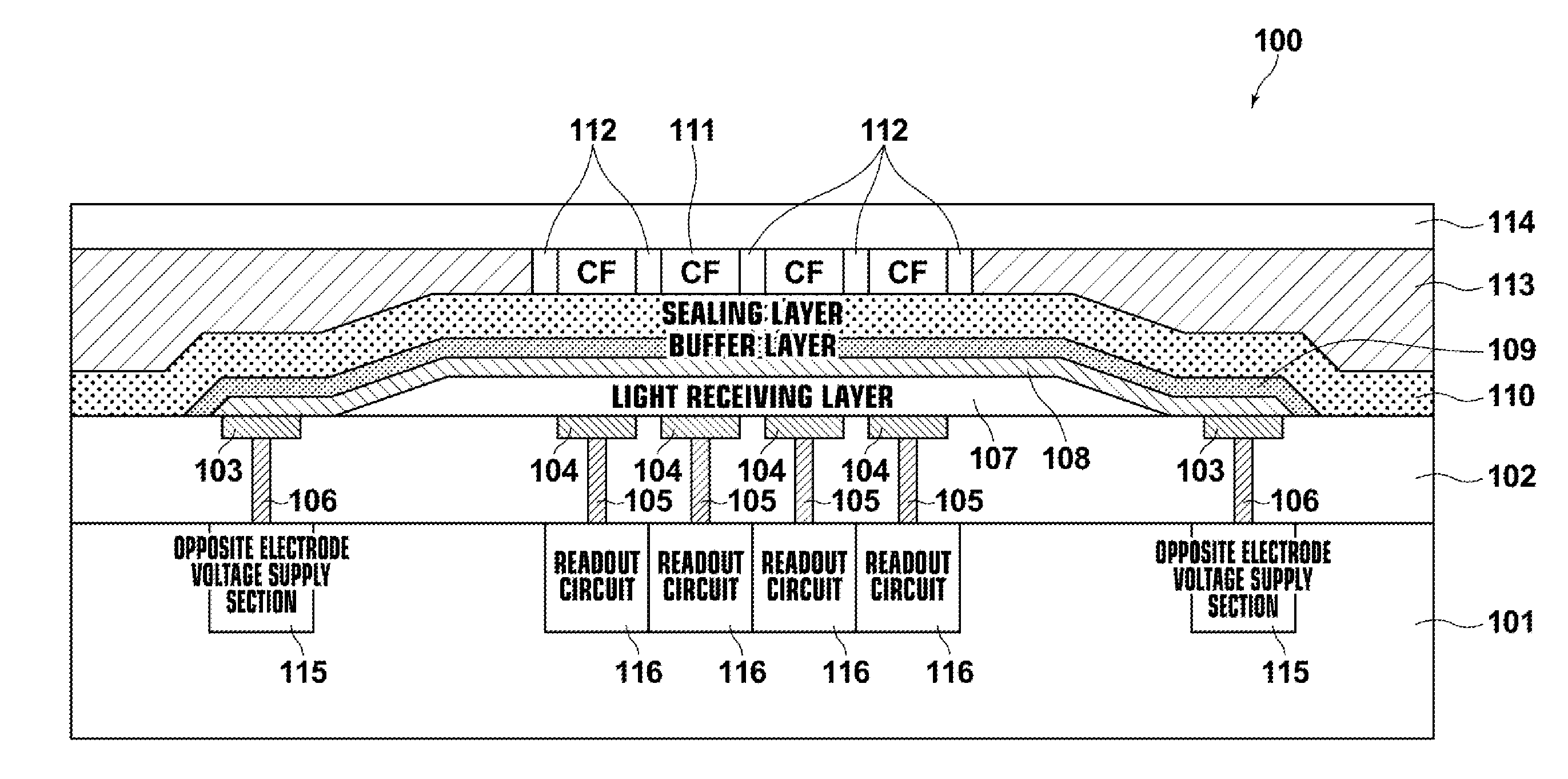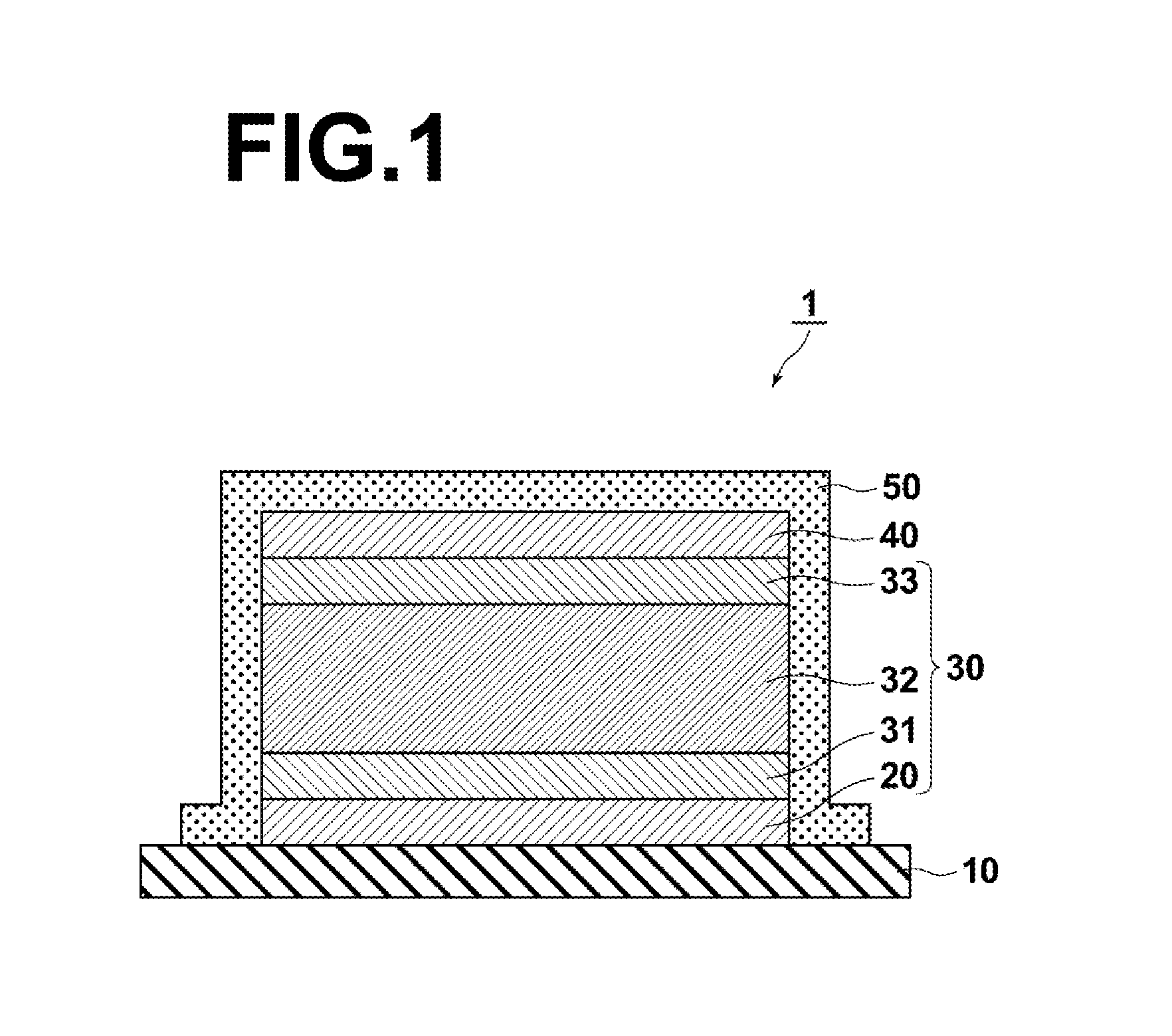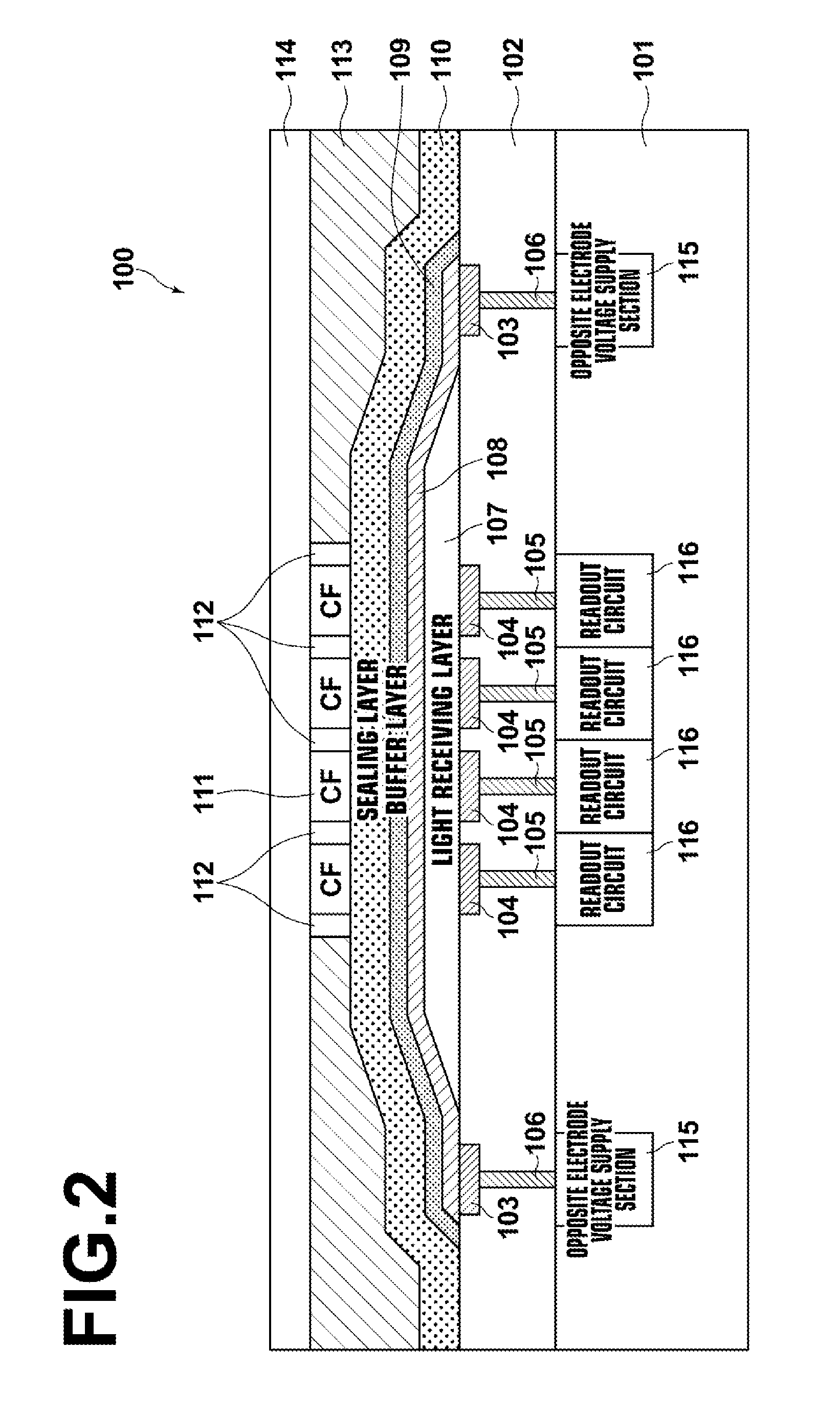Photoelectric conversion device and imaging device using the same
a conversion device and photoelectric technology, applied in thermoelectric devices, solid-state devices, nano-informatics, etc., can solve the problems of slow response speed and likely residual image, and achieve the effect of not deteriorating device performance, excellent step coverage, and significant deterioration of the performance of organic photoelectric conversion materials
- Summary
- Abstract
- Description
- Claims
- Application Information
AI Technical Summary
Benefits of technology
Problems solved by technology
Method used
Image
Examples
example 2
[0117]A photoelectric conversion device was produced in the same manner as in Example 1 other than the condition of the composition of the hole blocking layer, in which the mixing ratio of Compound 1 and C60 was changed to, Compound 1:C60=1:3 (volume ratio).
example 3
[0118]A photoelectric conversion device was produced in the same manner as in Example 1 other than the condition of the composition of the hole blocking layer, in which the mixing ratio of Compound 1 and C60 was changed to, Compound 1:C60=1:1 (volume ratio).
example 4
[0119]A photoelectric conversion device was produced in the same manner as in Example 1 other than that the thickness of the hole blocking layer was changed to 20 nm.
PUM
 Login to View More
Login to View More Abstract
Description
Claims
Application Information
 Login to View More
Login to View More - R&D
- Intellectual Property
- Life Sciences
- Materials
- Tech Scout
- Unparalleled Data Quality
- Higher Quality Content
- 60% Fewer Hallucinations
Browse by: Latest US Patents, China's latest patents, Technical Efficacy Thesaurus, Application Domain, Technology Topic, Popular Technical Reports.
© 2025 PatSnap. All rights reserved.Legal|Privacy policy|Modern Slavery Act Transparency Statement|Sitemap|About US| Contact US: help@patsnap.com



